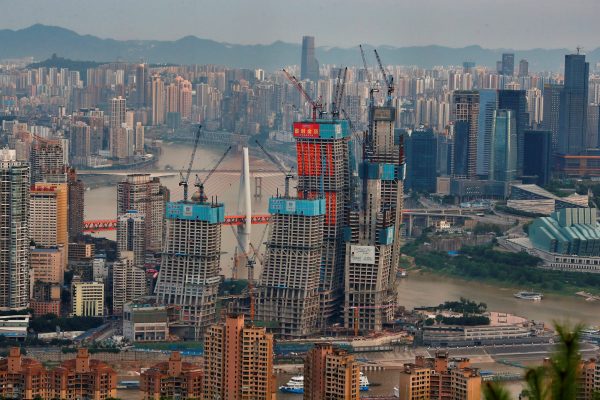Not coincidently, the IMF revised up its 2017 projection of growth in China to 6.7 per cent in its October World Economic Outlook. This move was largely due to the stronger-than-expected economic performance in the first half of 2017. According to the National Bureau of Statistics, the September Purchasing Managers’ Index was 52.4 per cent — its highest point since May 2012. The quality of economic growth has also improved: consumption made a larger contribution to growth, while the contribution of capital investment has gradually fallen and exports have slowed down.
The much anticipated 19th National Congress of the Chinese Communist Party in October 2017 was an opportunity to look for priorities for future development and reforms of the Chinese economy. In the report delivered to the Congress by President Xi Jinping, the principal contradiction facing Chinese society has evolved from one ‘between the ever-growing material and cultural needs of the people and backward social production’ to one ‘between unbalanced and inadequate development and the people’s ever-growing needs for a better life’. Those needs include environmental protection, action on climate change and people’s wellbeing.
This prominent change of statement marks a new era for the Chinese economy — an era in which the quality of life is expected to be promoted as much as the rate of economic growth.
Overall sentiment towards the Chinese economy in the Western world is more or less pessimistic. This largely arises from China’s growing debt-to-GDP ratio and from the fear of a sudden collapse of the economy due to strong adverse shocks.
One of the top priorities given to the new leadership is to prevent the accumulation of systemic financial risk and the maintenance of financial stability. This is in recognition of potential disruptions that could stem from high leverage ratios, the lack of regulation of off-balance sheet lending activities, the debt problems of local governments and state-owned enterprises as well as the housing price surge and speculative investment, to make matters worse, all associated with the shrinking fiscal capacity of the central government.
Despite debate about the severity of the threat posed by financial and systemic risks to the economy, the Chinese leadership has made clear statements on the matter and has shown a determination to defend the bottom line — financial stability.
An article recently made public on the official website of the People’s Bank of China (PBoC) by its governor, Zhou Xiaochuan, reiterated the critical importance of maintaining financial stability. He stated that the key strategy is for the PBoC to be proactive and to continue with its opening-up policy and deepening of financial reforms. This would include the opening up of domestic financial institutions and the liberalisation of financial markets, which will likely entail a reduction in capital account and foreign exchange market controls as well as further liberalisation of the renminbi.
Zhou’s article has also highlighted the enlarged role of China’s central bank in carrying out not only monetary policy but also macroprudential policy (the so-called ‘two-pillar macroeconomic regulation framework’). Monetary policy will target aggregate price stability and promote economic growth, while macroprudential policy will take direct aim at the financial system’s stability and soundness.
On 8 November 2017, the Financial Stability and Development Committee was established under the State Council. The idea was to establish a coordinated and functional body which oversees all financial institutions and regulatory committees in order to address systemic risk at a national level.
It is too early to make any decisive judgement about the work of the Committee. Tackling the issue of financial instability is a challenge for any country. This is particularly true for China, as there is a strong need to balance promoting reasonable economic growth and deepening structural reforms that might undermine economic performance in the short term.
So far, the economic slowdown has been dealt with reasonably well by expansionary monetary and fiscal policies, but the price of these policies has been a quick accumulation of corporate and local government debt (household debt is also rising but at a much slower rate). Admitting the debt problem and its potentially disruptive consequences is good for building up market confidence and managing expectations.
How to solve the problem effectively is still uncertain. The solution is probably what Zhou says in his article — there is no ideal sequence for reform, so seize every window of opportunity to push forward structural reform as they come.
Jiao Wang is Research Fellow at the Melbourne Institute of Applied Economic and Social Research at the University of Melbourne.
This article is part of an EAF special feature series on 2017 in review and the year ahead.

